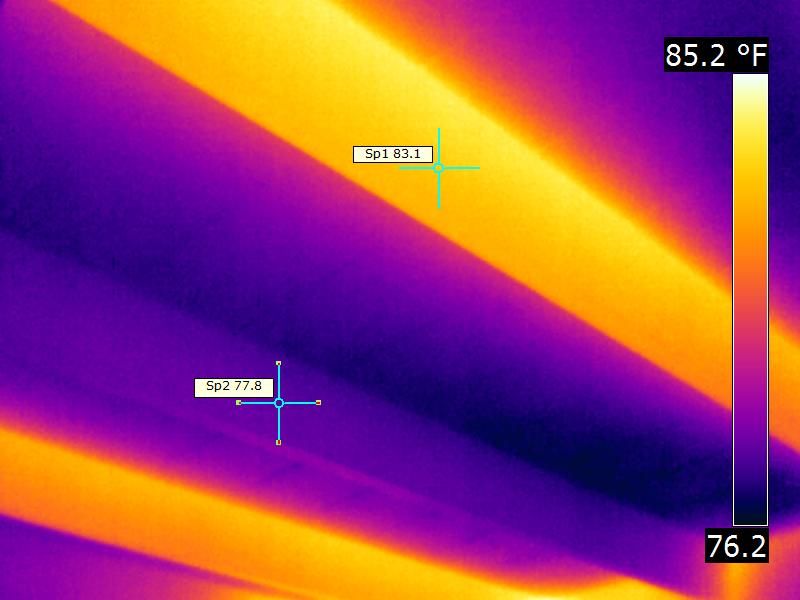How do you determine if there are any dead zones in a radiant heat system? Do you use your hand, laser thermometer, etc???
The center zone in this room was dead.
Linas, would not a laser thermometer pick up the temperature difference as well as the IR.
So would your hand but the IR makes a nice picture. ![]()
Yes it would Marcel. Do you check the temp of each radiant heat zone, wall radiator or forced air supply vent?
No need too, was considered inefficient years ago. Haven’t seen one in years. ;)
Especially if Electric.
Here is a cost calculator for different heat fuels.
http://hearth.com/econtent/index.php/articles/fuel_cost_comparison_calculator/

This was radiant ceiling heat in a condo with a central boiler. Individual thermostat for each unit. Floor is heated by unit below.
So, who lived in the Attic? It must have been comfortable there too! :mrgreen:![]()
No attic Marcel.

Well, must keep the roof nice and toasty. 
So temperature at upper unit is controlled, or partially controlled, by thermostat at unit below?
Gee your condos sure look different than mine
Oh Linus did you try testing the temp by licking it I hear that is pretty effective. I hear that is how they do it in Tenn
You have to ask your neighbor to turn your heat up or down?
Look up the term radiant.
Why?
We don’t have those here Linus so I’ve never seen one.
How do you know that there IS a center zone? Are they in / on the joists?
Just thought you might wish to see my picture.
**Just interesting that radiant floor heat is actually based on convection **.
(the term radiant fools you.)
Despite its name, radiant floor heating depends heavily on convection, the natural circulation of heat within a room as air warmed by the floor rises
The floors are poured concrete . The “joists” you see are made of metal and house the radiators. All “joists” in the unit were active except this one. Buyers/tenants are discouraged from using these as plant hangers, drill a hole in one and, well, I think you can see what happens.![]()
I did a thermal inspection of a Frank Lloyd Wright home in this area that had the tubing embedded in the plaster ceilings (image below)
One area of the home had a dead zone that an HVAC contractor couldn’t locate. (image below)
We located the malfunctioning control valve (in center of image below) was the problem.
The ceiling temperature is controlled by the occupant of each unit. Floor heat is conducted through the floor from the ceiling below each unit.





